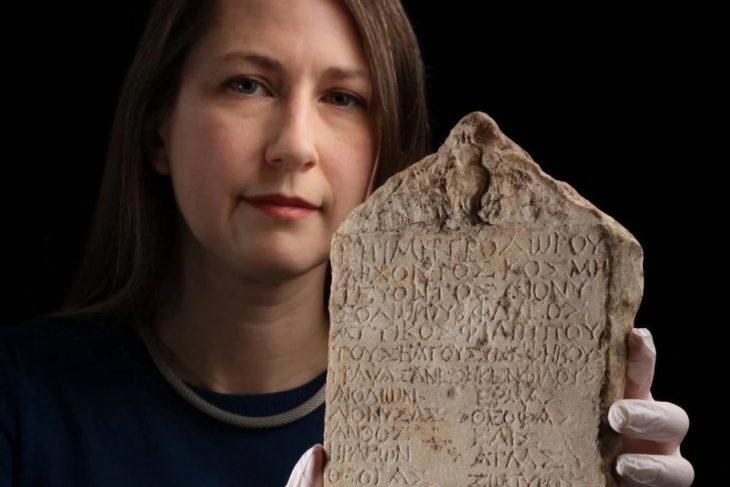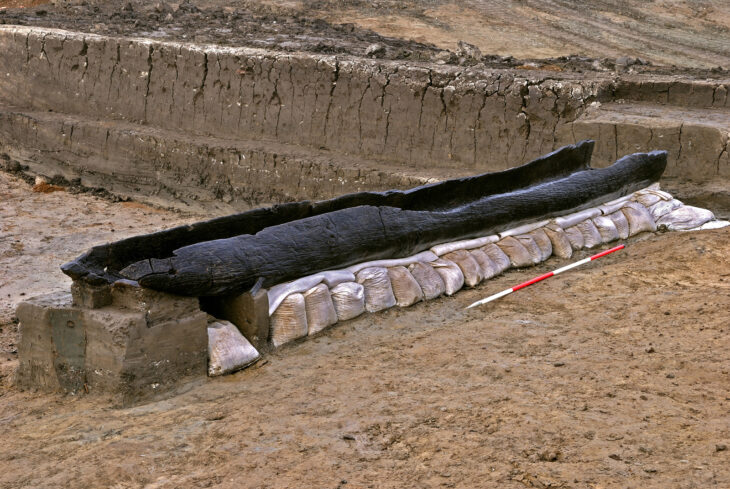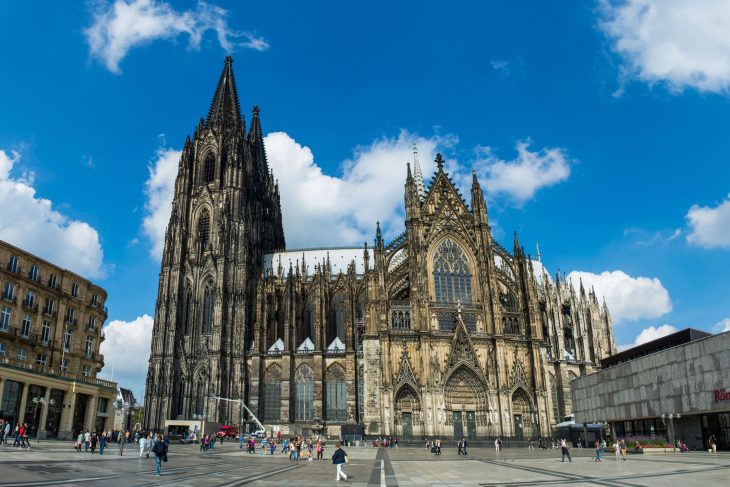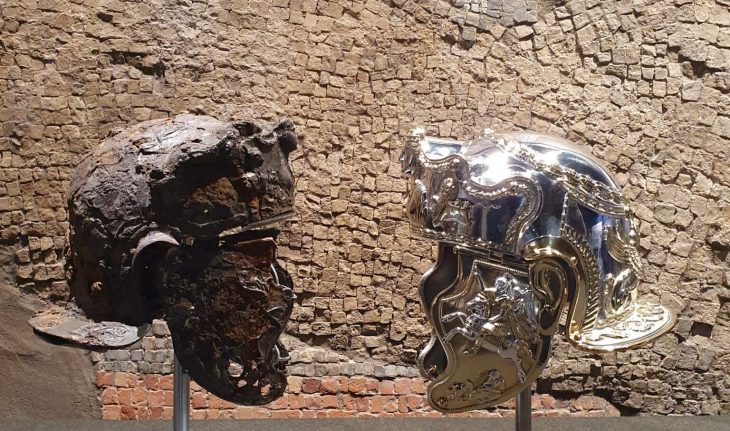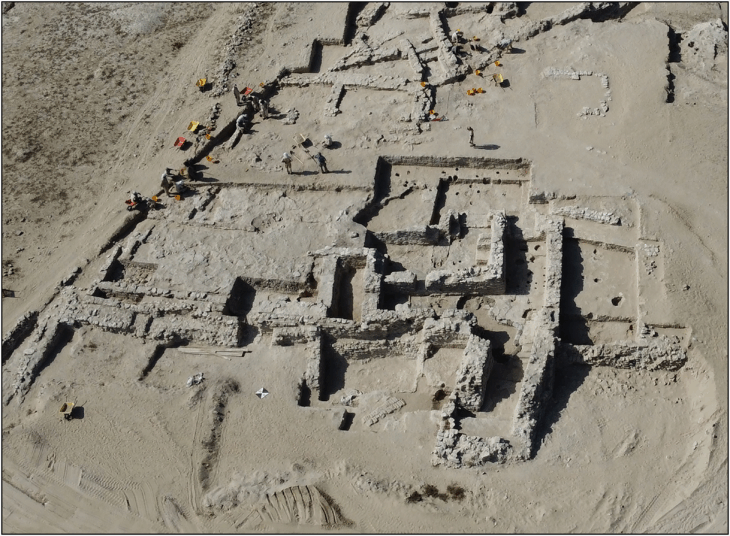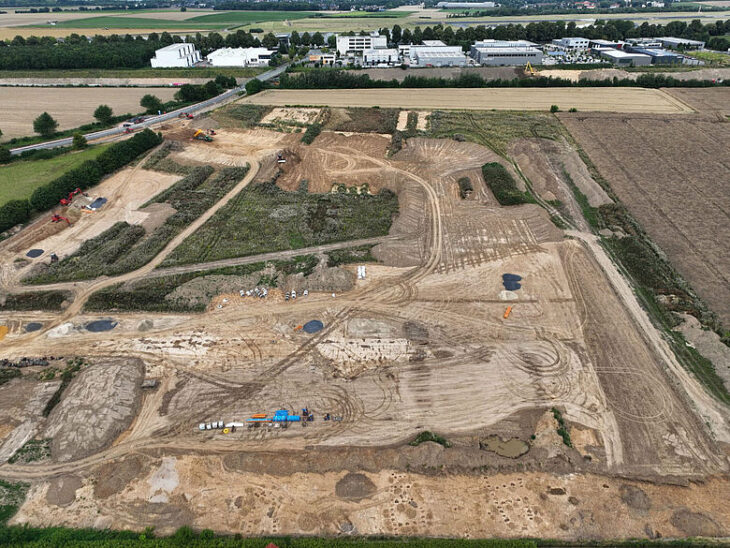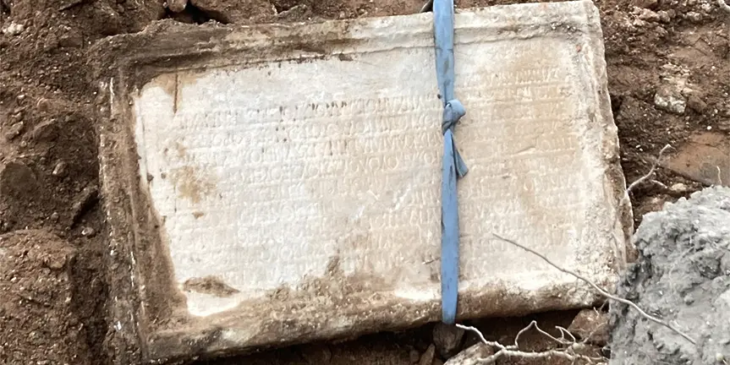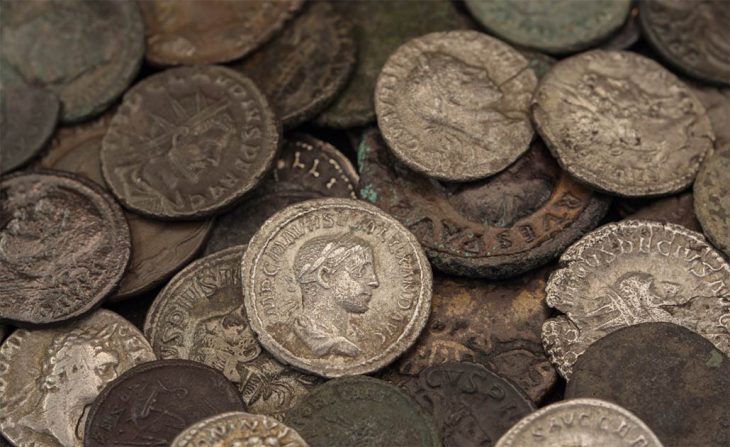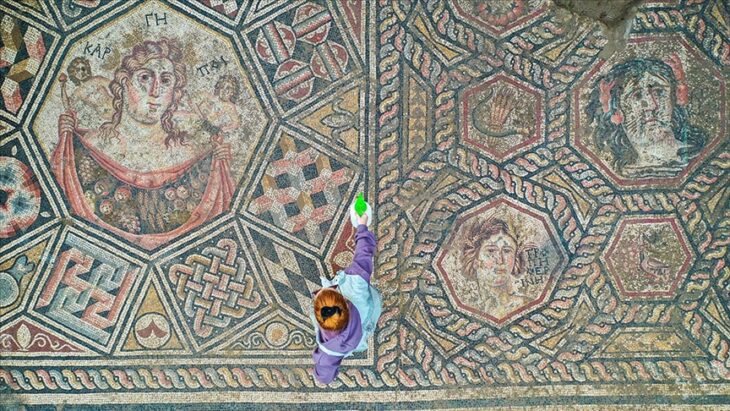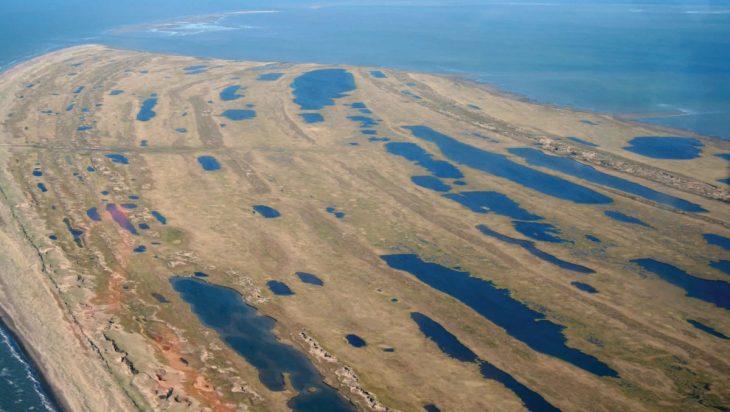The Diolkos, an ambitious road that crossed the entire Isthmus of Corinth and was partially paved with stone, was built by the ancient Greeks as early as 600 B.C.
At that time, ships traveling between the Ionian and the Aegean had to circumnavigate the Peloponnese, an often dangerous and stormy route of roughly 212 miles (340 km). The solution was to build the diolkos, a stone-paved road between the port on the Gulf of Corinth (Ionian Sea) and the port on the Saronic Gulf (Aegean Sea).
Although the archaeological evidence is sketchy, it appears that from one port to the other, boats or cargo (or both) were loaded onto wheeled devices and dragged across the isthmus. One section of the road featured purposefully grooved tracks—considered among the earliest known railways in recorded history.
The Diolkos was “the first systematic attempt to facilitate the portage of merchandise and warships from the Saronic to the Corinthian Gulf and vice versa,” says Dr. Georgios Spyropoulos, assistant director of the Corinthian Ephorate of Antiquities.
One of the greatest technological achievements of antiquity, the ancient pathway ran roughly parallel to the current Corinth Canal. Amazingly, remnants of the pathway can still be clearly seen in a few locations around Corinth, primarily on the School of Engineering’s property.
📣 Our WhatsApp channel is now LIVE! Stay up-to-date with the latest news and updates, just click here to follow us on WhatsApp and never miss a thing!!

There was a stone ramp where ships heading east would arrive at the northwest end of the Diolkos, where Poseidonia now stands in Corinth. Slaves then used enormous ropes to pull them up the ramps.
The men then dragged them up onto a sturdy wooden frame that stood atop the ramp. To make the ships as light as possible, their masts and other movables were removed once they touched down on dry land. Then, using enormous winches driven by multiple men, the enormous vessels were turned on a ninety-degree angle to align them with the Diolkos. Next, they would be pulled up another stone ramp to get them atop an iron undercarriage.
These enormous wheels, which resembled the undercarriages of a freight train today, ran the length of both sides and would carry the vessels to the opposite end of the Diolkos. Moving such massive vessels overland in this manner is a feat of engineering and brute strength, even though the road’s gradient only increased by about three percent.
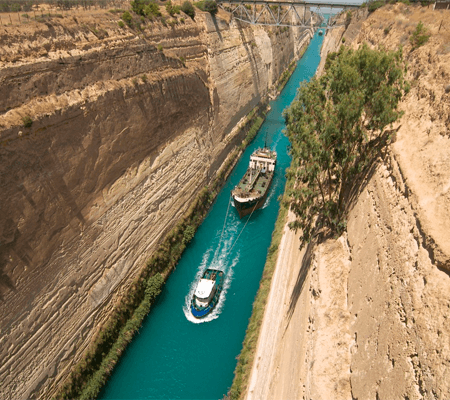
Human strength and advanced technological know-how enabled the Diolkos to operate for many centuries, evoking memories of the slaves hauling and shifting the enormous blocks that made up the Pyramids in ancient Egypt. These devices were in operation for many centuries. The stones’ deep grooves guaranteed that the undercarriage and its priceless load would remain securely on course until they reached the other side of the isthmus.
Various ancient rulers, including Julius Caesar and Alexander the Great, considered digging a canal across the Isthmus of Corinth. In A.D. 67, the Roman Emperor Nero attempted to build a canal between Corinth’s ports using thousands of slaves, but the project was soon abandoned.
In the 1800s, the Greek government decided to sponsor theconstruction of the Corinth Canal. It was started in 1889 and completed in 1893, fulfilling a dream more than 2,000 years old.
The canal is between 69 feet (21 m) and 82 feet (25 m) wide, cutting through limestone. Although the canal lacks locks, boats can be controlled by raising and lowering submersible bridges at either end of the waterway. The Peloponnese, which is now officially an island, is connected to the rest of Greece by a highway bridge that spans the top of the canal.
Unfortunately, the Corinth Canal proved difficult to use for several reasons. The precarious cliff walls were prone to erosion and landslides that obstructed passage, and it was too narrow for contemporary ships. In the waterway, strong tides made sailing challenging as well. The canal is now primarily used by small pleasure crafts and tourist cruise boats.
Cover Photo: Ancient Diolkos stone road allowed ships to go from Ionian to Aegean. Twitter/The Wrath of Gnon





